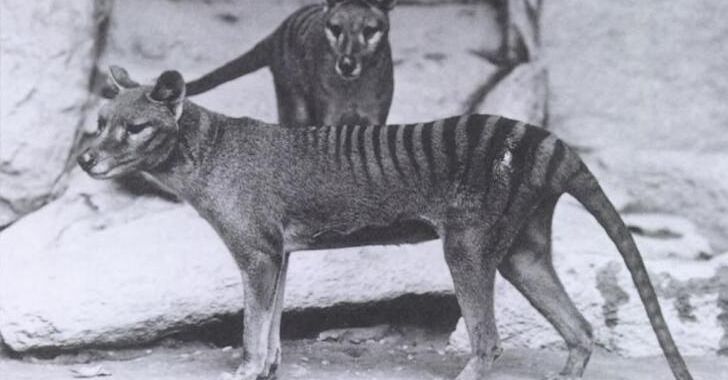A plan to de-extinct the thylacine with the goal of re-introducing it into the wild. To be done by a company called Colossal in partnership with the Thylacine Integrated Genomic Restoration Research Lab (TIGRR), based at the University of Melbourne.
"Of all the species that humanity has wiped off the face of the Earth, the thylacine is possibly the most tragic loss. A wolf-sized marsupial sometimes called the Tasmanian tiger, the thylacine met its end in part because the government paid its citizens a bounty for every animal killed. That end came recently enough that we have photographs and film clips of the last thylacines ending their days in zoos. Late enough that in just a few decades, countries would start writing laws to prevent other species from seeing the same fate."
"As with Colossal's mammoth plans, TIGRR intends to obtain thylacine genomes, identify key differences between that genome and related lineages (mostly quolls), and then edit those differences into marsupial stem cells, which would then be used for IVF. It, too, faces some significant hurdles, in that nobody has made marsupial stem cells yet, nor has anyone cloned a marsupial -- two things that have at least been done in placental mammals (though not pachyderms)."
But the thylacine is a more tractable system than a mammoth because more museum samples because it survived until much more recently and a marsupial embryo gets to the point of birth with less nutritional demand and the rest of development takes place in the mother's pouch.
De-extinction company sets its next (first?) target: The thylacine

There are no comments yet.